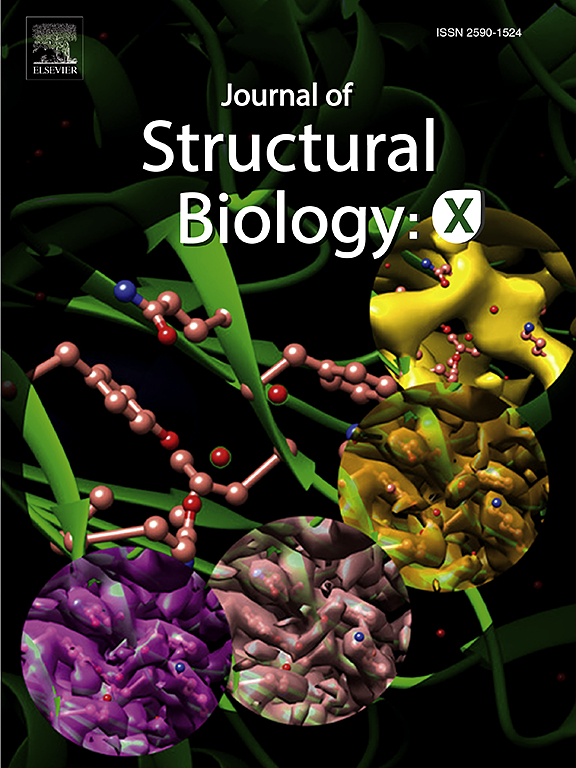Mechanistic insights into cyclodextrins as substrates and inhibitors of GH57 family amylopullulanase from Aquifex aeolicus
IF 2.7
3区 生物学
Q3 BIOCHEMISTRY & MOLECULAR BIOLOGY
引用次数: 0
Abstract
Maltooligosaccharides (MOs) have gained significant attention in the food and pharmaceutical industries owing to their valuable functional properties, including controlled sweetness, digestibility, and enhanced bioavailability. However, conventional MOs is production involves complex processing steps and significant production costs. A potential high-efficiency synthesis of specific MOs can be achieved through the ring-opening reaction of cyclodextrins (CDs) catalyzed by amylolytic enzymes. In this study, we analyze the catalytic conversion of α-, β-, and γ-CDs by a GH57 family amylopullulanase from Aquifex aeolicus (AaApu) using thin-layer chromatography (TLC). Our findings demonstrate that AaApu has a substrate specificity for γ-CD, while all three CDs exert competitive inhibition on pullulan hydrolysis. To elucidate the molecular mechanism of CDs as inhibitor and substrate of amylopullulanase, we determined high-resolution crystal structures of AaApu (wild-type and D352N) in complex with α-, β-, and γ-CD through co-crystallization. These findings establish a structure–function framework for understanding the bifunctional nature of CDs as both substrates and inhibitors in GH57 amylopullulanases.

环糊精作为水蛭GH57家族淀粉葡聚糖酶底物和抑制剂的机制研究。
低麦芽糖(MOs)由于其具有控制甜度、消化率和提高生物利用度等重要功能特性,在食品和制药行业受到了广泛关注。然而,传统的MOs生产涉及复杂的加工步骤和巨大的生产成本。在淀粉水解酶的催化下,环糊精开环反应是一种有潜力的高效合成特定MOs的方法。本研究采用薄层色谱法(TLC)分析了Aquifex aeolicus (AaApu) GH57家族淀粉样葡聚糖酶对α-、β-和γ-CDs的催化转化。我们的研究结果表明AaApu对γ-CD具有底物特异性,而这三种cd对普鲁兰水解均有竞争性抑制。为了阐明CDs作为淀粉葡聚糖酶抑制剂和底物的分子机制,我们通过共晶法测定了AaApu(野生型和D352N)与α-、β-和γ-CD配合物的高分辨率晶体结构。这些发现为理解CDs作为GH57支链葡聚糖酶底物和抑制剂的双重功能性质建立了一个结构-功能框架。
本文章由计算机程序翻译,如有差异,请以英文原文为准。
求助全文
约1分钟内获得全文
求助全文
来源期刊

Journal of structural biology
生物-生化与分子生物学
CiteScore
6.30
自引率
3.30%
发文量
88
审稿时长
65 days
期刊介绍:
Journal of Structural Biology (JSB) has an open access mirror journal, the Journal of Structural Biology: X (JSBX), sharing the same aims and scope, editorial team, submission system and rigorous peer review. Since both journals share the same editorial system, you may submit your manuscript via either journal homepage. You will be prompted during submission (and revision) to choose in which to publish your article. The editors and reviewers are not aware of the choice you made until the article has been published online. JSB and JSBX publish papers dealing with the structural analysis of living material at every level of organization by all methods that lead to an understanding of biological function in terms of molecular and supermolecular structure.
Techniques covered include:
• Light microscopy including confocal microscopy
• All types of electron microscopy
• X-ray diffraction
• Nuclear magnetic resonance
• Scanning force microscopy, scanning probe microscopy, and tunneling microscopy
• Digital image processing
• Computational insights into structure
 求助内容:
求助内容: 应助结果提醒方式:
应助结果提醒方式:


